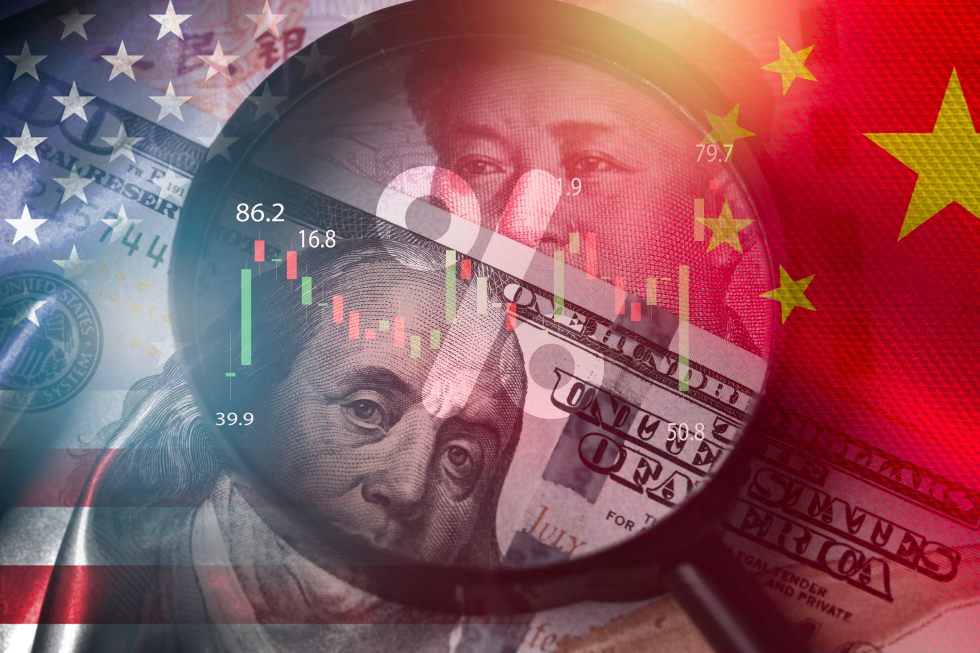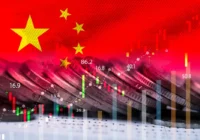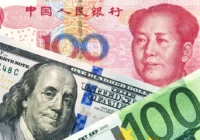In today’s rapidly shifting global trade environment, the relationship between manufacturing employment and US–China trade policy has reached a critical juncture. With AI and automation transforming the manufacturing sector, nations are confronted with the challenge of balancing economic efficiency with national security priorities. This evolving dynamic underscores the importance of understanding how manufacturing trends, economic growth and international trade policies are increasingly interconnected.
In the US, where industrial policies, tariffs and labor-market shifts play a pivotal role in economic competitiveness, the ongoing trade tensions with China are proving to be a significant factor in shaping the future of work. As manufacturing jobs evolve in response to technological advances and shifting global markets, the broader narrative of globalization is also changing. This shift presents new opportunities and challenges, with profound implications for economic stability, workforce development and the overall trajectory of international trade. The outcome of this complex interaction will determine the US’s ability to adapt to a new economic order while safeguarding its industrial base and global competitiveness.
The Kuznets curve and manufacturing employment
The Kuznets curve is a graphic illustration of an economic theory introduced by Simon Kuznets. It shows an inverted-U-shaped relationship between economic development and income inequality, positing that inequality rises during early industrialization but declines as economies reach advanced stages of development. The curve framework illustrates that as economies mature and technological advancements drive productivity, manufacturing’s share of employment tends to decline, pushing nations toward service-oriented sectors. This inverted-U-shaped trajectory suggests that both income inequality and manufacturing employment follow a similar pattern in response to structural economic transformations. For developing regions such as Africa, where manufacturing plays a critical role in employment, the Kuznets curve provides a useful framework for understanding the complex dynamics of industrialization and employment as economies mature.
The transformative role of AI in manufacturing
AI and automation technologies are driving a profound transformation in the manufacturing sector, automating many tasks previously performed by human workers. This shift is enhancing productivity, enabling companies to sustain or increase output levels with a smaller workforce. Further, the growth of AI and automation is contributing to a structural shift from manufacturing toward services and knowledge-based sectors. As high-skill industries, such as software development and data science, expand, they attract educated workers, while manufacturing employment stagnates or declines. For many developing countries, the rise of automation could make it harder to maintain large-scale manufacturing jobs as advanced economies increasingly turn to robotics and AI-driven production to stay competitive.
The inverted-U-shaped relationship between manufacturing employment and GDP per capita reflects a broader transition from labor-intensive manufacturing to service-oriented economies. This shift is not solely a result of economic development but also reflects the influence of advancing technologies, which reduce the need for manufacturing labor.
While this may benefit high-income countries by reducing labor costs and boosting efficiency, it poses significant challenges for developing economies. These economies, which traditionally relied on labor-intensive manufacturing to fuel economic growth and job creation, may find that the model is no longer as feasible in a world increasingly dominated by automated production processes. As AI and automation reshape the global production landscape, policymakers face the challenge of balancing support for manufacturing with fostering innovation in service and technology sectors to ensure long-term economic resilience.
For developing nations, sustaining manufacturing as a vital employment source requires adapting industrial policies to embrace both traditional manufacturing and high-growth, technology-driven sectors. In high-income nations, on the other hand, AI and automation are essential for retaining competitiveness in high-value sectors. For example, specialized manufacturing remains vital, as seen in industries like aerospace, biotechnology and electronics in the US, Japan and Germany. Here, manufacturing is integrated with high-value services, maintaining competitiveness through constant innovation.
The complex transformation of US manufacturing employment
As the global economy shifts, manufacturing employment in the US faces a complex transformation, intricately connected to the ongoing trade dynamics with China. Historically, US manufacturing employment surged with industrialization, but the rise of automation, coupled with shifting trade policies, has led to a gradual decline in these jobs. The US–China trade relationship has played a pivotal role in shaping this trajectory. China’s growing dominance in manufacturing, aided by low-cost production and state-driven economic policies, has led to significant outsourcing of US manufacturing jobs, exacerbating concerns over job loss and wage stagnation in key sectors.
In response, the US has increasingly turned to tariffs and industrial policies, notably during the Trump administration, to counteract China’s perceived unfair trade practices, such as intellectual property theft and subsidies to domestic industries. While these tariffs were intended to bring manufacturing jobs back to the US and reduce reliance on China, they also brought unintended consequences, such as higher costs for US consumers and disrupted supply chains. Moreover, these trade wars have highlighted the delicate balance between protecting domestic industries and fostering long-term economic growth.
Simultaneously, the rise of automation and artificial intelligence in manufacturing further complicates the issue. As advanced economies like the US embrace AI-driven production to stay competitive, manufacturing jobs are increasingly automated, reducing the number of workers needed in these sectors. The decline in manufacturing employment is not just a result of trade policy but also a structural shift driven by technological advances. This poses a significant challenge for policymakers as they seek to navigate the dual pressures of protecting employment and encouraging technological innovation. Ultimately, the future of US manufacturing employment will depend on balancing industrial policies, trade strategies and the need to foster both high-skill jobs in technology-driven sectors and resilient manufacturing industries that can adapt to the changing global landscape.
Historical perspective on tariffs and economic growth
While tariffs undeniably helped protect emerging American industries, their primary function before 1913 was as a crucial revenue source for the federal government, funding about 90% of expenditures. This revenue was essential for infrastructure and military needs in a time when other federal taxes were nearly nonexistent. Economist Yeo Joon Yoon argues that America’s rapid economic growth was not only a result of tariffs but also due to favorable institutional conditions, such as the absence of direct taxes on income and corporate profits, which allowed capital to be freely reinvested. This fiscal environment, combined with a growing market and resource base, offered additional momentum for economic expansion.
Early US Treasury Secretary Alexander Hamilton, a key advocate for industrial growth, recognized both the opportunities and constraints that tariffs imposed. While he promoted tariffs as a way to nurture US industry, he cautioned against excessively high rates that could reduce imports and, consequently, government revenue. For a young nation reliant on foreign goods and raw materials, finding the right tariff balance was vital for sustaining both government funding and industrial growth. This complex approach reflects early American economic policy’s reliance on tariffs as a flexible tool for revenue, protection and stability.
Modern protectionists often refer to 19th-century America as a model of successful industrial growth under high tariffs. Figures like former US Trade Representative Robert Lighthizer argue that tariffs were key to America’s transition from an agrarian economy to an industrial powerhouse. Advocates such as Oren Cass and Michael Lind also suggest that tariffs enabled the US to pursue import-substitution policies that supported domestic industries. For them, 19th-century tariff policy exemplifies how protective measures can help build and sustain local industries, despite the associated trade-offs.
However, Hamilton’s careful approach to tariffs reflected a nuanced understanding of economic development, balancing protectionist goals with the need to keep markets open to support revenue and ensure access to imported goods. His caution underscores the complex nature of tariff policy, where protecting industries had to be weighed against the need for stable federal funding. While tariffs shielded fledgling American industries, they were vulnerable to economic cycles and international trade fluctuations that could impact revenue streams.
The introduction of the modern federal income tax, passed in 1913 on the heels of the 16th Amendment, marked a turning point in American fiscal policy. With this new source of income, the government gained financial flexibility and could pursue targeted economic policies beyond tariffs. This shift diminished the federal government’s dependence on tariffs, allowing for a more diversified fiscal strategy that could support economic development without relying solely on trade barriers. This historical evolution underscores that while tariffs can play a vital role in early industrial growth, their effectiveness is greatly enhanced when complemented by broader fiscal tools, such as income taxes, which provide the government with more stable and adaptable revenue sources.
US–China trade history
The US–China Permanent Normal Trade Relations (PNTR) policy aligns with a broader historical framework of US foreign policy, beginning with President Richard Nixon’s 1972 initiative to establish diplomatic ties with China. Nixon’s decision marked a strategic pivot, recognizing China’s rising economic and military influence and the importance of constructive engagement. This vision influenced the US’s decision to grant China PNTR status in the late 1990s, rooted in the belief that integrating China into the global economy would reduce risks associated with isolating a growing power.
By normalizing trade relations, the US aimed to encourage China to adhere to international trade norms, fostering stability through economic interdependence. Advocates viewed PNTR as part of a strategy to promote gradual economic and policy alignment. While China’s rapid export-led growth and market integration reflected some successes, challenges persisted, particularly in areas like intellectual property rights, trade imbalances and China’s state-driven economic approach.
While China has adopted some global trade practices, particularly in exports and production, it continues to selectively comply with international norms, especially in areas like intellectual property protection. This selective compliance has fueled ongoing tensions with the US, particularly during the 2018–2020 trade war initiated by President Donald Trump. The trade war aimed to address perceived unfair practices through tariffs and other measures under Sections 301 and 232, targeting industries such as electronics and high-tech equipment. These tariffs were designed to reduce China’s trade imbalances and encourage greater market access, highlighting the US’s concerns over China’s protectionist policies and state-driven economic model.
Despite these tariffs, which failed to yield significant changes in Chinese behavior, the US–China trade friction underscored China’s drive for technological self-sufficiency. In response, China accelerated its efforts in innovation, placing a greater emphasis on research and development, technology transfer and fostering collaborations between industry and academia. These initiatives aim to reduce China’s reliance on external technology and strengthen its domestic capabilities. This ongoing tension between the two nations reveals the strategic importance of high-tech sectors in a globally connected economy, where both must navigate the delicate balance between protectionism and innovation to remain competitive.
Balancing national security and economic efficiency
US Treasury Secretary Janet Yellen, speaking at the Stephen C. Friedheim Symposium on Global Economics hosted by the Council on Foreign Relations, outlined President Joe Biden’s administration’s strategy for aligning international economic policy with domestic priorities. Yellen emphasized the need to balance economic efficiency with national security, particularly regarding China and key industrial sectors. While acknowledging China’s low-cost production of essential goods like solar panels — which could advance climate goals if heavily relied upon — Yellen warned of the risks of over-dependence. She stressed the importance of strengthening supply-chain resilience and promoting US domestic manufacturing, even at the expense of higher costs.
Yellen also addressed China’s high savings rate, which has fueled substantial subsidies in advanced sectors like semiconductors and clean energy, contributing to global overcapacity and undermining industries in the US and other countries. She called for China to shift its focus toward increasing consumer spending and reinforcing social safety nets, though the Chinese government continues to prioritize state-backed investments. The secretary observed that the Chinese government has chosen instead to continue funneling resources into state-backed investments. She cautioned that this approach could lead to a “slippery slope,” where demands for subsidies may extend across more industries, potentially straining fiscal discipline. Also, the subsidy programs implemented by Japan, the European Union and other select groups perpetuate crony capitalism, fostering undue influence and squandering taxpayer resources. Given these dynamics, the US may wish to maintain or even strengthen trade barriers to counteract practices, particularly extensive subsidies, not only in China but also in Japan and the European Union, practices which distort global markets and undermine US competitiveness.
Her analysis reflects the administration’s belief that targeted trade and industrial policies are vital for national security and long-term economic stability, despite the short-term challenges they may pose. In parallel, the Biosecure Act, recently passed by the US House of Representatives, seeks to restrict US pharmaceutical partnerships with certain Chinese companies due to national security concerns — an action contested by firms like WuXi AppTec. Amid rising geopolitical tensions and ongoing tariffs, US drugmakers are diversifying their supply chains to reduce reliance on Chinese suppliers. This shift is part of a broader strategy to enhance resilience, though it comes with increased costs and potential delays as companies seek high-standard alternatives. The move highlights the tradeoff between securing supply chains and managing rising production expenses, which could impact drug prices and availability in the US market.
Negotiating this crossroads
As US–China trade tensions persist, the US faces a critical balancing act between fostering economic growth, driving technological innovation and maintaining global competitiveness. The rapid evolution of automation and AI in manufacturing is reshaping the economic landscape, presenting a dual challenge: the US must preserve its industrial base while adapting to an increasingly service-oriented economy. At the same time, US trade policies — especially tariffs and industrial strategies designed to address China’s trade practices — further complicate this transition.
While tariffs on Chinese goods may offer short-term protection to certain US industries, they have also exposed deeper structural challenges. The risk is that these trade measures could inadvertently stifle the very innovation that is essential for the US to maintain long-term global competitiveness. As policymakers grapple with these issues, it’s clear that a nuanced trade approach, focused not only on protecting domestic industries but also on cultivating a highly skilled workforce for emerging sectors, will be crucial for ensuring the nation’s economic resilience.
This evolving dynamic emphasizes the urgent need for a more refined global trade framework, particularly within the World Trade Organization (WTO). The WTO must adapt to the rising importance of industrial policy globally, ensuring that trade rules remain relevant in an era of technological transformation. Equipped with an updated toolkit, the WTO can help nations navigate the delicate balance between pursuing national industrial strategies and fostering global cooperation. How the US responds to these shifts in manufacturing employment and trade policy will ultimately define its ability to thrive in a rapidly changing global economic order.
The views expressed in this article are the author’s own and do not necessarily reflect Fair Observer’s editorial policy.
Support Fair Observer
We rely on your support for our independence, diversity and quality.
For more than 10 years, Fair Observer has been free, fair and independent. No billionaire owns us, no advertisers control us. We are a reader-supported nonprofit. Unlike many other publications, we keep our content free for readers regardless of where they live or whether they can afford to pay. We have no paywalls and no ads.
In the post-truth era of fake news, echo chambers and filter bubbles, we publish a plurality of perspectives from around the world. Anyone can publish with us, but everyone goes through a rigorous editorial process. So, you get fact-checked, well-reasoned content instead of noise.
We publish 2,500+ voices from 90+ countries. We also conduct education and training programs
on subjects ranging from digital media and journalism to writing and critical thinking. This
doesn’t come cheap. Servers, editors, trainers and web developers cost
money.
Please consider supporting us on a regular basis as a recurring donor or a
sustaining member.
Will you support FO’s journalism?
We rely on your support for our independence, diversity and quality.










Comment